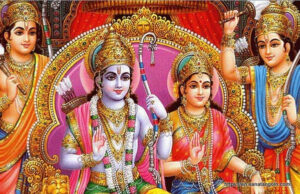Traditional religious worship encompasses a wide range of rituals, prayers, and ceremonies that have been practiced by various cultures and communities for centuries. These worship practices are deeply rooted in history, shaping the social, cultural, and spiritual aspects of people’s lives. While the specifics of worship may vary widely across different religions, the underlying purpose is often the same—to connect with a higher power, express gratitude, seek blessings, and find inner peace. This article explores the essence of traditional religious worship, its practices, and its influence on society.

Traditional Religious Worship
Understanding Traditional Religious Worship
Traditional religious worship refers to rituals and ceremonies passed down through generations, often forming the backbone of a community’s spiritual life. These practices are not just religious obligations but are intertwined with cultural identity and social customs. Traditional worship is characterized by its adherence to ancient scriptures, ritualistic practices, and an emphasis on communal participation.
For many, traditional worship is a means to preserve and continue the faith of their ancestors. It includes a variety of expressions, such as prayers, hymns, offerings, and specific rites that are performed in temples, churches, mosques, or even at home altars. The customs and symbols involved in these rituals are carefully preserved to maintain the authenticity and sanctity of the practice.
Key Elements of Traditional Religious Worship
1. Rituals and Ceremonies: Rituals are an essential part of traditional worship. They include chanting hymns, lighting candles or lamps, offering food or flowers to deities, and performing specific movements or gestures. These acts are believed to invite divine presence and convey respect and devotion. Ceremonies can be performed on a daily basis or during special occasions such as festivals, births, marriages, and deaths.
2. Prayers and Mantras: Prayers and mantras are central to many traditional worship practices. These verbal expressions of faith are often recited or sung and can be directed towards a deity, the universe, or even one’s inner self. Prayers can be a form of asking for guidance, expressing gratitude, or seeking forgiveness.
3. Offerings and Sacrifices: Offerings, such as food, flowers, incense, and money, are commonly given during traditional worship. In some cultures, animal sacrifices are also part of the tradition, symbolizing a form of gratitude or atonement. These offerings are seen as a way to honor the divine and seek blessings in return.
4. Holy Texts and Scriptures: Traditional worship is often guided by holy texts and scriptures that outline the proper conduct of rituals and prayers. These texts provide a spiritual framework and serve as a source of wisdom and guidance for the followers.
5. Music and Dance: Music and dance play an integral role in many traditional religious practices. They are often used to express devotion, celebrate divine presence, and elevate the spiritual experience of the worshippers. For example, bhajans (devotional songs) in Hinduism, gospel music in Christianity, and Sama (Sufi music) in Islam.
6. Meditation and Contemplation: Meditation is a significant aspect of traditional worship in many Eastern religions, such as Hinduism and Buddhism. It involves focusing the mind and achieving a state of heightened spiritual awareness, which is believed to bring the worshipper closer to the divine or to their own inner truth.
Importance and Significance of Traditional Worship
Traditional religious worship serves multiple purposes, both at the individual and community levels:
1. Spiritual Connection: One of the primary reasons for traditional worship is to establish a connection with the divine. Through prayer, meditation, and rituals, individuals seek to experience a sense of closeness with their higher power, feeling protected and guided.
2. Cultural Identity and Heritage: Traditional worship is not just a religious activity; it is also a way to preserve cultural heritage. It serves as a link between generations, helping people maintain a sense of identity and belonging. The festivals, rites, and ceremonies act as reminders of cultural history and tradition.
3. Moral and Ethical Guidance: Many traditional worship practices include teachings that emphasize moral values such as honesty, compassion, and selflessness. These values are often imparted through stories, parables, and verses from holy texts, providing ethical guidance for individuals and communities.
4. Social Cohesion: Traditional worship brings people together, fostering a sense of community and shared identity. Participating in rituals and festivals strengthens social bonds and creates a supportive environment where individuals feel a part of something greater than themselves.
5. Emotional and Psychological Support: Worship practices often provide emotional solace and psychological support. During times of hardship, grief, or confusion, traditional worship can offer comfort, hope, and a sense of purpose. The act of prayer and meditation can reduce anxiety, calm the mind, and promote overall well-being.

Examples of Traditional Religious Worship Practices
1. Hinduism: In Hinduism, traditional worship (puja) involves rituals such as offering flowers, lighting lamps, and chanting mantras in front of deities. Temples are adorned with intricate decorations, and the atmosphere is filled with the fragrance of incense and the sound of bells and conch shells. Special pujas are performed during festivals like Diwali, Durga Puja, and Holi.
2. Christianity: Traditional Christian worship often takes place in churches, where the congregation comes together for prayer, hymns, and scripture reading. The Eucharist (Holy Communion) is a central sacrament in many Christian denominations, symbolizing the body and blood of Christ. Christmas and Easter are celebrated with elaborate services, prayers, and feasts.
3. Islam: In Islam, traditional worship includes the five daily prayers (Salah), recitation of the Quran, and observance of fasting during the month of Ramadan. The Friday congregational prayer (Jumu’ah) and the annual pilgrimage to Mecca (Hajj) are important aspects of Islamic worship.
4. Buddhism: Traditional Buddhist worship involves meditation, chanting, and offering food and flowers at temples. Followers often chant sutras and practice mindfulness meditation to cultivate wisdom and compassion.
5. Judaism: In Judaism, traditional worship is centered around the synagogue, where prayers are recited, and the Torah is read. Observing the Sabbath, participating in festivals like Passover, and conducting rites of passage, such as bar mitzvahs, are integral to Jewish worship.

Challenges and Adaptations in Modern Times
In today’s fast-paced world, traditional religious worship faces various challenges. Modern lifestyles, technological advancements, and changing social dynamics have led to adaptations in how traditional worship is practiced. While some communities continue to uphold the age-old customs, others have adapted rituals to suit contemporary needs, incorporating digital platforms and online services.
Despite these changes, traditional worship remains a significant aspect of many people’s lives. It continues to provide spiritual fulfillment, cultural continuity, and a sense of community.
Traditional religious worship is a complex and meaningful practice that goes beyond mere ritualistic activities. It is a profound expression of faith, a preservation of culture, and a source of strength and guidance. Though the forms of worship may differ, the underlying purpose remains the same: to honor the divine, seek blessings, and find a deeper understanding of life and spirituality. As society evolves, traditional worship practices continue to adapt, ensuring their relevance and significance for generations to come.
See more:
